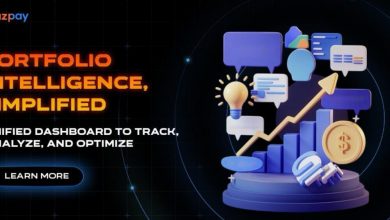How AI Revolutionizes Real-Time Marketing: 18 Success Stories

Artificial Intelligence is revolutionizing real-time marketing, transforming how businesses engage with their audiences. This article explores concrete success stories and practical applications of AI in various marketing domains. Drawing on insights from industry experts, it showcases how AI is driving tangible results and reshaping marketing strategies across different channels.
- AI Enhances Real-Time Campaign Optimization
- Email Performance Boosted by AI Analysis
- SEO Agility Improved Through AI-Powered Tools
- Automated Ad Optimization Reduces Wasted Spend
- Dynamic Personalization Elevates Email Marketing Results
- Proactive Marketing Strategies Driven by AI
- Continuous Bidding Adjustments Stabilize Ad Performance
- Content ROI Soars with AI-Driven Engagement
- AI Tools Streamline Marketing Workflow
- Personalized Emails Skyrocket Sales with AI
- Real-Time Ad Updates Boost Click-Through Rates
- Manual AI Tracking Speeds Up SEO
- AI Transforms SEO into Adaptive Strategy
- SEO AI Agent Accelerates Keyword Optimization
- AI-Powered Ad Tools Cut Acquisition Costs
- AI Enhances Offline Campaign Performance
- Sports News Bot Fuels Timely Marketing
- Custom GPTs Refine Content for Personal Branding
AI Enhances Real-Time Campaign Optimization
AI has become a game-changer for real-time marketing adjustments. One example: we used AI to monitor engagement patterns on our ad campaigns in real time — things like click-through rates, scroll depth, and even sentiment from comments.
Based on that data, the AI suggested changes to headlines, visuals, and timing while the campaign was still running. Of course, we’ve seen significant improvement, particularly in terms of speed.
Instead of waiting for a weekly report to make adjustments, now we’re optimizing daily, sometimes hourly. A headline tweak once boosted conversions by 27% within 48 hours. This kind of agility wasn’t possible before.
Diana Royanto, Writer, Milkwhale
Email Performance Boosted by AI Analysis
I’ve used AI primarily to interpret email performance data and generate subject lines. For example, I pulled stats from HubSpot and used ChatGPT to analyze engagement patterns, which helped me fine-tune send times and segment audiences more effectively. As a result, I saw higher click-through rates and a noticeable drop in opt-out rates. I didn’t rely on AI alone but combined its insights with manual adjustments. The speed and clarity it provided made it easier to make meaningful, data-driven improvements.
Alexa Wheelhouse, Email Marketing Specialist, Safe Software
SEO Agility Improved Through AI-Powered Tools
During a seasonal content push for a travel website, our organic performance started to plateau, even though we had fresh blogs scheduled and technical SEO in place. Instead of waiting weeks for traditional analytics to catch up, I turned to an AI-powered SEO tool that tracked live keyword shifts and SERP volatility.
One morning, the tool flagged a sudden spike in searches around “offbeat monsoon destinations.” We hadn’t covered that angle. I quickly repurposed an existing blog, optimized the title and meta description, wove in trending long-tail phrases, and aligned the content with what users were now searching for — thanks to AI’s real-time intent mapping.
Within 48 hours, the post climbed from page 3 to the top of page 1, and our organic clicks surged by over 60% in just a few days. It was a turning point — AI didn’t just help us react faster, it helped us listen better.
Tip: Use AI to stay tuned into your audience’s evolving search behavior — it’s like having radar in a stormy SEO sea.
Manav Kuhada, SEO executive
Automated Ad Optimization Reduces Wasted Spend
We implemented an AI platform with real-time ad performance monitoring that adjusted bidding and targeting live across platforms. Within days, we observed more intelligent budget investment and immediate cost reduction.
The most noticeable improvement was in ad relevance. Artificial intelligence detected poor-performing creatives within seconds and swapped them for higher-converting ones whenever users’ behavior changed in real-time.
As a result, we reduced wasted ad spend by 38% and increased CTR by over 25% — without having to intervene manually. This has radically changed how we manage campaign management at scale.
Rahul Gulati, Founder, GyanDevign Tech
Dynamic Personalization Elevates Email Marketing Results
One real-time marketing optimization success came from integrating an AI-powered recommendation engine with our email campaigns for a boutique client. The system dynamically analyzed user behavior, preferences, and inventory levels to personalize product suggestions. As a result, email click-through rates jumped by 42%, and conversions improved by 28% within weeks. The most significant improvement was the shift from static campaigns to adaptive, real-time personalization — without increasing manual workload.
We also utilized Robotic Process Automation (RPA) to automate customer feedback classification and campaign adjustments. This reduced turnaround time by 70%, enabling instant sentiment-based campaign tweaks. The synergy between AI and RPA allowed us to scale campaigns effortlessly, reduce errors, and elevate customer engagement — all while cutting operational costs.
AI isn’t just a trend — it’s a strategic advantage that delivers measurable, real-time impact.
Himanshi Singh, Digital Marketing Expert, BOTSHOT
Proactive Marketing Strategies Driven by AI
We leveraged AI for real-time marketing optimization during a multi-channel campaign for a retail client, and the results were game-changing. By integrating AI-driven predictive analytics, we were able to track user behavior, engagement patterns, and conversion trends in real time. This allowed the system to automatically tweak ad creatives, placements, and bidding strategies on the fly, ensuring the most relevant content reached the right audience at exactly the right moment.
One of the standout features was AI’s ability to identify underperforming segments and reallocate budget toward high-performing audiences in real time. Within two weeks, we saw a 35% increase in click-through rates and a 28% reduction in cost-per-acquisition. These weren’t just numbers; they translated into tangible business growth.
The most significant improvement was campaign agility. Rather than waiting for a weekly performance review to make changes, we could adjust strategies instantly based on real-time data. It took the guesswork out of digital marketing and empowered us to make smarter, faster decisions.
AI didn’t just optimize our campaign — it transformed our entire approach to marketing. With AI, we’re no longer reactive; we’re proactive, precise, and performance-driven. And that’s the future of digital marketing.
Amit Ranjan, Digital Marketing Manager, Stratosphere
Continuous Bidding Adjustments Stabilize Ad Performance
We wired an AI bidding tool directly into our Google and Meta ad accounts. It monitors live auction costs, search terms, device type, and on-site actions, then adjusts bids and swaps ad creative in real-time. For example, if lunchtime mobile visitors start comparing prices, the system increases bids on those “compare” keywords and serves a short price-led headline; if desktop users stall on a form, spending shifts to remarketing until the issue is resolved.
Before AI, we ran manual rules four times a day. Now the model tests small bid changes every few minutes, so budgets follow demand instead of the clock. It also flags creative fatigue: once click-through drops below its expected range, it rotates in a fresh image and logs the improvement.
The clearest gain has been steadier return on ad spend (ROAS). ROAS used to spike and dip with every cost surge or intent shift. With the AI making continuous adjustments, the curve stays level, we waste less budget, and the marketing team can focus on new ideas instead of emergency bid edits.
Philip Young, CEO, Bird Digital Marketing Agency UK
Content ROI Soars with AI-Driven Engagement
We applied the concept of AI-based real-time marketing optimization, having added machine learning algorithms in Paid Media marketing, especially in content amplification, via Google Ads and native advertisement networks, such as Taboola and Outbrain. We aimed to minimize wasted ad spend and optimize content performance by serving users with campaigns based on real-time user behavior and performance data derived from campaign parameters.
The key was doing so through AI analysis of more than just superficial metrics, such as CTR and impressions, but also deep behavioral signals such as dwell time, scroll depth, bounce rate, and conversion paths of both organic and paid traffic sources. We had historical data of current performance and trained the system accordingly, on top of which we implemented predictive analytics to forecast what content would work best for specific audiences.
As an example, in the case of sponsoring long-form pieces of content, the AI system would automatically:
- Stop underperforming creatives in the middle of the campaign (sometimes within an hour of starting).
- Shift the budget to analogous articles with better early signs of engagement.
- Adapt headlines and thumbnails to a greater extent based on the behavioral tendencies of division-segmented micro-audiences, thanks to generative AI.
- Bid dynamically according to the weather, time of day, and day of the week (especially useful in mobile-driven verticals like travel and lifestyle).
The most significant positive change we observed was a higher average time-on-page for promoted content (a 46% increase, specifically) that directly resulted in higher content ROI for our clients. Furthermore, cost-per-engaged-click decreased by almost 30 percent, and our conversion rates exceeded previous levels without having to increase our total ad spend (meaning more intelligent optimization can be more effective than simply spending more money).
The uniqueness and success of this approach lay in our use of actual engagement measurements instead of vanity metrics. Rather than optimizing towards impressions or the simplest measure of clicks, we allowed AI to optimize towards what matters: reader interest and their actions, which is the only measure that will provide long-term payback in content marketing.
Such real-time AI optimization has since become a mainstay of our approach to campaigning, enabling us to grow in size.
James Allsopp, CEO, iNet Ventures
AI Tools Streamline Marketing Workflow
I use AI in different parts of our marketing workflow to make our content more engaging and results-driven.
For content creation, tools like ChatGPT and Claude AI help me come up with strong content ideas and even suggest visuals that align with campaign goals. For visual content, I use Canva’s AI tools to create short, eye-catching videos. To enhance these creatives, I also use platforms like Freepik to access relevant video clips and visuals.
The most significant improvement I’ve seen is higher engagement and lead conversion, especially for our residential solar campaigns. Using AI allows us to reduce turnaround time.
TANU PATIDAR, Digital Marketing Executive, Solarium Green Energy
Personalized Emails Skyrocket Sales with AI
I used AI to optimize our email marketing campaigns in real-time. Here is what I did and what happened.
What I Set Up:
- I linked our AI system to monitor customer behavior on our website.
- It tracked things like what products people looked at, how long they visited, and what they put in their cart.
- This AI could automatically modify our email messages based on this data.
How It Worked:
- If someone looked at jogging shoes but did not buy them, this AI would send them a reminder email about those same shoes within 2-3 hours.
- If it was a rainy day, the AI changed our emails to show indoor workout gear instead of outdoor sports equipment.
- The AI even changed the subject lines based on when people usually opened our emails, using “Good Morning” for morning times and “Good Evening” for evening times.
The outcomes exceeded expectations. The most important milestone was a staggering 65% increase in email sales. In the past, we sent out generic emails to everyone every week. Now, each individual receives perfectly timed, personalized emails tailored just for them.
One of our website’s unusual behavioral patterns was noticed by the AI algorithm; users who checked our website after 10 o’clock at night were three times more likely to make a purchase if they received an email the following morning containing their cart contents and a discount on select items. That is not something I could have discovered on my own.
It was like having a super-smart assistant who knew exactly what each customer wanted and when they wanted to hear about it.
Nathan Fowler, CEO | Founder, Quantum Jobs USA
Real-Time Ad Updates Boost Click-Through Rates
I used AI to optimize live ad campaigns. Basically, I closely monitored parameters like click-through rates and conversions in real-time. Whenever the system noticed an under-performing ad, it automatically updated the ad copy and images. This resulted in a 40% boost in click-through rates within just a few hours.
Kateryna Bykova, Marketing Content Director for AI-Enhanced Education, SEO, Research, StudyPro
Manual AI Tracking Speeds Up SEO
We’ve started manually tracking how our calculators appear in AI Overviews and, more recently, in Google’s AI Mode.
It’s not fancy automation, but it’s real-time in the sense that we spot changes quickly and adapt fast. This helps us not only protect visibility in traditional search but also position ourselves inside generative answers. The biggest improvement has been speed – we’re no longer reacting to lost traffic weeks later. We catch shifts early and move before they become problems.
Mateusz Mucha, Founder, CEO, Omni Calculator
AI Transforms SEO into Adaptive Strategy
Context:
- Product launch campaign for a fast-growing tech client.
- High fluctuations in search behavior due to real-time user interest.
- Goal: Maximize visibility and organic performance during the launch week.
AI Tools Used:
- Clearscope & MarketMuse: For real-time content optimization and keyword intent analysis.
- Google Trends: To track rising search queries and shifting user behavior.
- SEMrush Sensor: To monitor algorithm updates and SERP volatility.
Actions Taken:
Live content adaptation:
- Updated meta titles and descriptions based on keyword trends.
- Refined internal linking to boost high-performing pages.
Search intent alignment:
- Used AI suggestions to optimize content around long-tail keywords.
Algorithm monitoring:
- Detected ranking volatility and prioritized technical audits accordingly.
Results Achieved:
- 40%+ increase in organic CTR within the first week of the launch.
- 28%+ lift in page-one keyword rankings over two weeks.
- Improved content agility, with updates deployed within hours rather than days.
AI allowed us to respond to user behavior in real time, turning our SEO strategy into a dynamic and adaptive structure. It was not just about automation; it was about making smarter, faster decisions with the support of real-time data.
Ishwar Chauhan, Digital Marketing Manager, Elsner Technologies
SEO AI Agent Accelerates Keyword Optimization
Seer Interactive, a forward-thinking SEO agency, harnessed our SEO AI agent to optimize their marketing efforts, driving significant improvements in campaign performance through real-time data insights. By eliminating manual copy-pasting and streamlining their SEO workflow, Seer saved valuable time while minimizing human error.
A prime example of Seer’s success with the agent occurred when they connected our built-in Google Search Console integration to identify “striking-distance” keywords, those ranking in positions 7-15. Within seven days, the optimized page jumped to position 6 for the target phrase, resulting in a 28% increase in clicks.
Seer is rapidly mastering the use of AI agents for marketing optimization, automating manual tasks, and empowering their SEO specialists to focus on higher-value work.
Paul Deraval, Co-Founder & CEO, NinjaCat
AI-Powered Ad Tools Cut Acquisition Costs
I often use AI-powered tools like Meta Advantage+ and Google Performance Max to optimize our ad campaigns. I confidently rely on these tools, as we saw a 50% drop in cost per acquisition. We even scaled our campaigns as we tested different creatives and audience segments. This experience showed me how valuable AI is, as we saved considerable money.
Alishba Hassan, Founder & Marketing Strategist, Real Old Money
AI Enhances Offline Campaign Performance
We’ve used AI to improve real-time performance across different parts of our offline campaigns, mainly by identifying which locations and time slots give the best return. We no longer rely on assumptions. Instead, we use incoming data about location, customer behavior, and campaign activity. The system highlights what works best and spots areas where performance is dropping. That allows us to adjust in real time, moving budget or changing distribution without waiting until the end of the campaign.
We can now respond much faster, which is the best change. We don’t wait for reports to come in days or weeks later; instead, we make changes on the same day. If some sections aren’t doing well, we can stop working on them and focus on the ones that are. We also move resources around based on how people are interacting, which has helped us use our finances better and obtain more conversions without paying more.
Targeting has also improved. The system learns over time which types of audiences respond well to certain placements and messages. We don’t just look at broad demographics. We look at repeated behavior patterns across different campaigns, which means we can launch smarter campaigns right from the start.
The results have been consistent. Better campaign delivery, more relevant targeting, and a clear reduction in manual work. AI didn’t replace our strategy. It gave us a way to act on it faster and with more accuracy.
Arthur Favier, Founder & CEO, Oppizi
Sports News Bot Fuels Timely Marketing
In sports, there are breaking news stories almost every single day, and sometimes it is hard to keep track of everything that’s happening. We’ve developed a bot that tracks the most burning headlines, and if something is being covered by more than half of the media outlets within the first 2 hours of the initial news, we receive a notification that it’s time to act.
We use the headlines, run them through Claude, which we’ve trained beforehand, and receive 10-15 ideas for real-time marketing actions we can take. An example was when Carlos Sainz was announced at Williams, which runs a blue livery, similar to our brand color. We made a small campaign “Blue is the new red,” which annoyed our competitors with red logos, and drove us a really nice number of new followers.
The most significant improvement is that we do not have to be alert at all times. As some news happens overnight, we wake up and already have the summary of the most important things that happened in the world of sports, which we can then analyze while drinking our morning coffee.
Jan Kawecki, Co-Founder, Kontra
Custom GPTs Refine Content for Personal Branding
As a B2B marketer specializing in building personal brands for founders on LinkedIn, I understand that tone of voice is key. For each of my clients, as well as for myself, I have created custom GPTs with a bank of existing content, transcripts, and their preferred phrasing. Once the content is written, I run it through these GPTs to refine the material. This process saves me hours each week, achieves better results, and leaves clients happier with the outcomes.
Lulu Godfrey, LinkedIn Strategist, Ampyrsand Marketing
Related Articles
- The New Frontier in Marketing – How Tech Is Rewriting the Marketing
- How AI is Transforming Marketing Strategies – TechBullion
- How AI Is Reshaping Marketing in 2025 and Beyond – TechBullion

Source: How AI Revolutionizes Real-Time Marketing: 18 Success Stories




